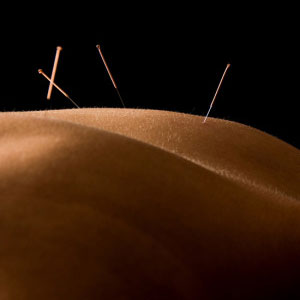 I am thrilled to introduce an incredible new service to Absolute Wellness patients – dry needling. Why add another modality? Simply put, the research and outcomes are too significant not to. It is quick, effective and highly specific. It works fluidly to support the structural work already we’re doing with chiropractic adjustments. I look forward to helping more patients heal faster and hold their adjustments longer.
I am thrilled to introduce an incredible new service to Absolute Wellness patients – dry needling. Why add another modality? Simply put, the research and outcomes are too significant not to. It is quick, effective and highly specific. It works fluidly to support the structural work already we’re doing with chiropractic adjustments. I look forward to helping more patients heal faster and hold their adjustments longer.
So what exactly is it? Dry needling is based on the work of Janet Travell and is a method of releasing toxic chemicals that inflame your muscles known as a trigger points. Trigger points are caused by trauma to an injured area that causes muscles to react by seizing up in an effort to protect the body from further damage. This is why trigger points feel knot-like and often painful upon applying pressure. Trigger points can be active (meaning you know they hurt – this is usually what you fill in when checking in at AWC), passive (when I press a particular spot and you say, “hey Doc, that wasn’t there before you started poking around”) or latent (meaning they will eventually cause you pain but aren’t at the current time). Whichever type they are, they can cause a myriad of problems from pain in injured and surrounding areas, dysfunctional movement patterns, headaches and migraines, and joint dysfunction (that last one is why it works so well with the chiropractic adjustment). If trigger points are left untreated for too long, circulation is compromised, as is oxygen and ATP (energy) production. Yuck.
Does Dry Needling Hurt?
Dry needling uses a very small, thin solid needle or filament to disrupt the trigger point and elicit a “twitch response” which returns that muscle to a normal state by allowing inflammatory chemicals to leave the trigger point, to relax the muscle, and to restore blood flow to the area. Dry needling uses the same type of needle as used in acupuncture, however while acupuncture remains close to the skin, dry needling penetrates deeper and so requires a physical therapist’s or chiropractor’s expert knowledge of the musculoskeletal system to administer. While dry needling does penetrate the muscles, the needles are very thin and you may or may not feel the insertion of the needle. Some patients may feel a brief ache or cramping sensation during the twitch response.
Is Dry Needling For You?
Dry needling is an effective treatment for acute and chronic pain, range of motion issues, joint dysfunction, recovery from injury, and even prevention of pain and injury, with very few side effects (unlike trigger point injections, which involve the injection of a local anaesthetic, saline solution or steroid into the trigger point which can cause irritation). Hence the name dry needling. This technique is suitable for many patients who want to find and eliminate neuromuscular dysfunctions that leads to pain and functional deficits.
- Common Conditions Treated With Dry Needling:
- Acute and chronic pain
- Lower back pain
- Tendonitis
- Carpal tunnel syndrome
- Disk pathology
- Neck/Back Pain
- Shoulder Pain
- Tennis/Golfer’s Elbow
- Hip and Gluteal Pain
- Headaches
- Knee Pain
- Plantar Fasciitis
- Sciatica
If this sounds like something you’d like to try, let us know. If you know a friend or loved one who’d benefit from this, please feel free to share. We are always seeking those who need our care! Email us here or call us at (843) 416-8218. Be well!



